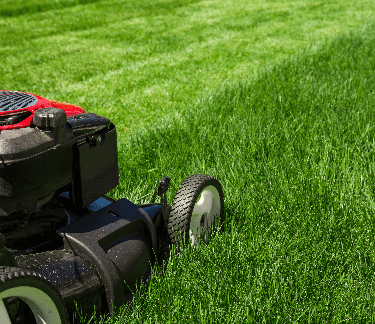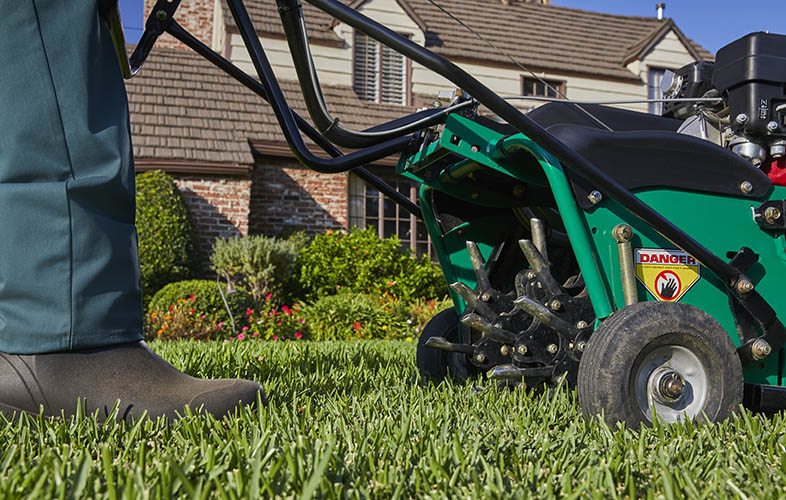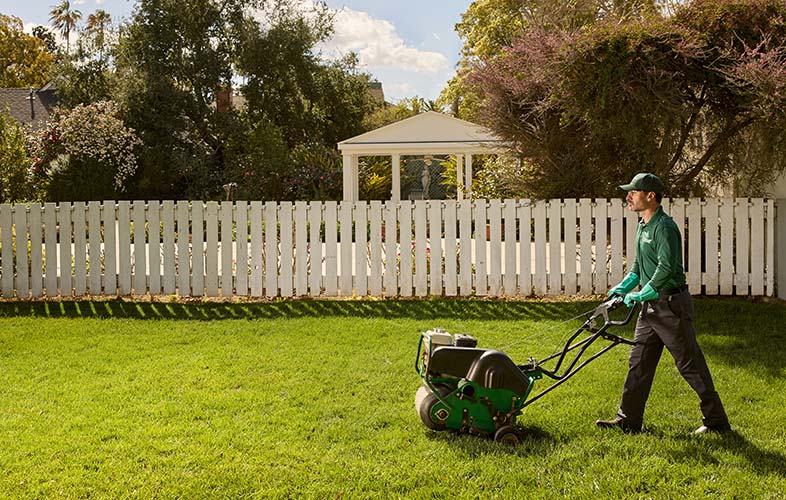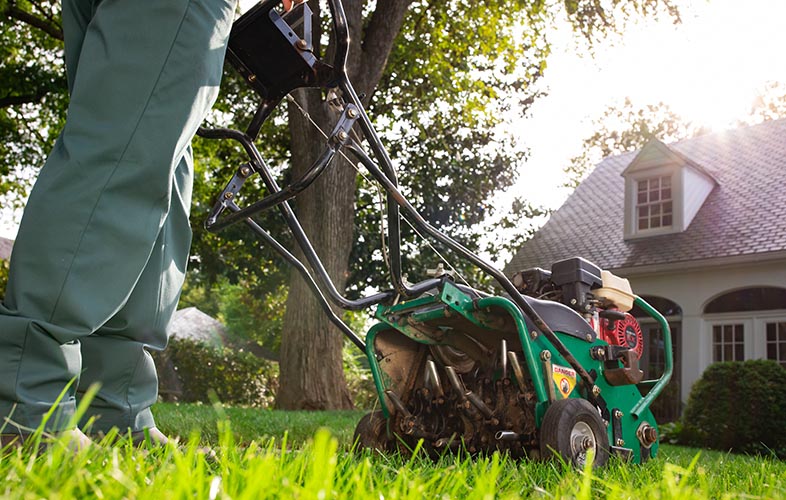Just what is a lawn aeration service, and how can it help your lawn? Find out here.
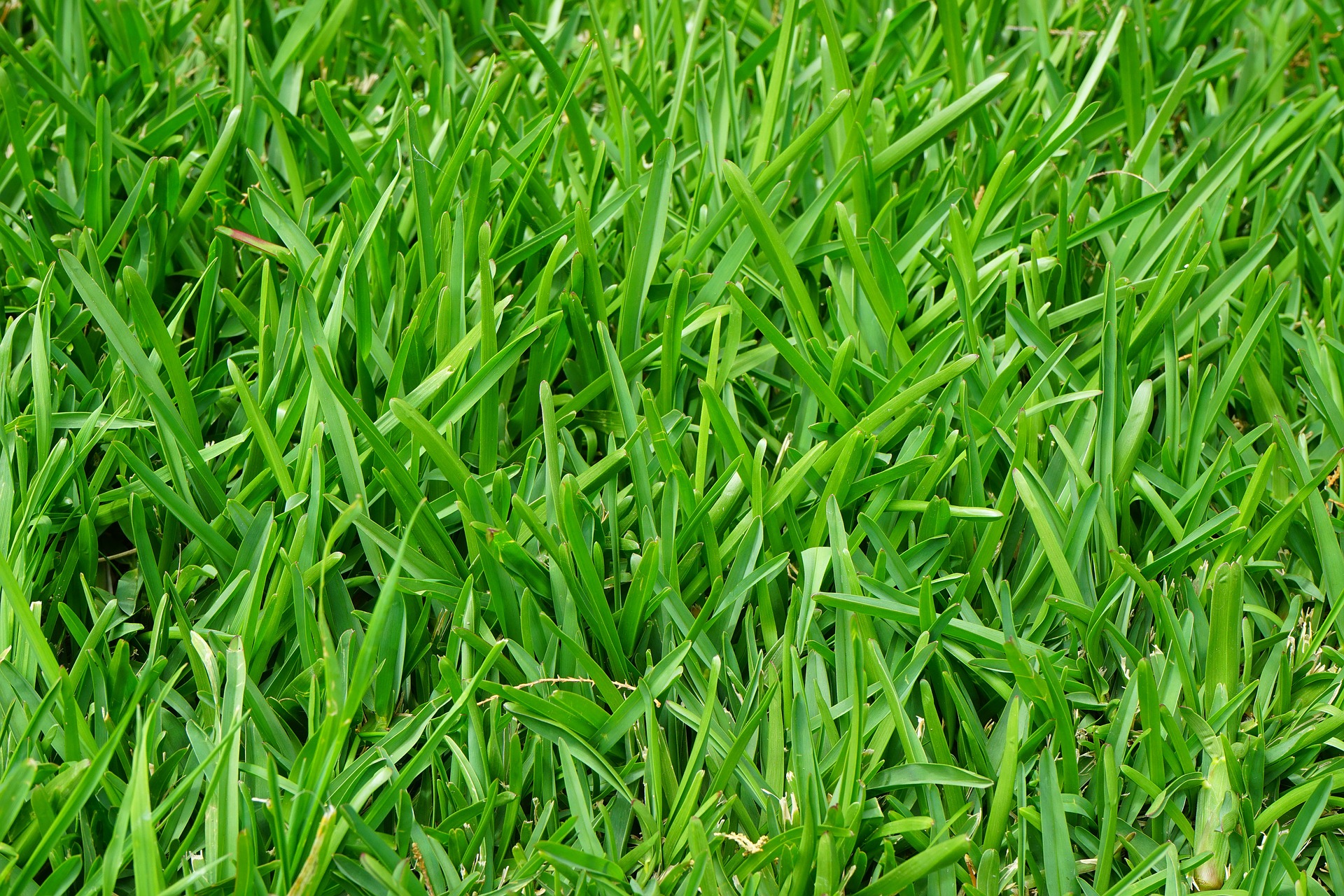
What is lawn aeration?
Just as people need air to breathe, so do healthy, happy lawns. Your lawn needs a way to open up and receive nutrients and adequate hydration. Lawn aeration, often called core aeration, removes small plugs of turf, thatch and soil from your lawn. These plugs break down and feed nutrients back to your lawn's root system.
Aeration is one of the best ways to make your lawn thicker and improve the effectiveness of normal irrigation, fertilizers and pest control programs. This is why lawn aeration services are a must with any lawn care regimen.
How can aeration help your lawn?
Lawn aeration services provide numerous benefits:
- Improves Turf Health. Core lawn aeration provides the root zone with greater access to air, water, and fertilizer. This access to air, water, and nutrients, improves the overall health of the turf. Also, turfgrass roots will be deeper and more extensive.
- Aids Thatch Management. Thatch is that tightly interwoven plant material located just above the soil surface that can prevent nutrients and other necessary items from reaching grass roots. Core lawn aeration helps in thatch management by punching holes in the thatch layer, and by introducing thatch-decomposing microorganisms from the soil to the top of the thatch layer.
- Improved resistance. A healthy root system increases your turf's ability to survive if diseases or pests attack your lawn.
- Relieves Soil Compaction. Removing cores relieves compaction and decreases soil density.
- More efficient water usage. Aeration lets water flow directly to grass roots and means that you use water more efficiently.
- Benefits pH Modification. Applying lime or sulfur after lawn aeration promotes the change of pH deeper into the soil profile. This will let nutrients penetrate deeper in the root zone to become available to the turf.
- Benefits Overseeding Operations. It is helpful to core aerate before and after seeding into an existing lawn. Soil cultivation enhances the seed-to-soil contact necessary for germination and creates a moist, protected environment optimal for seedling growth and development.
How often should you aerate your lawn?
As a general rule, lawn aeration should be performed annually. However, twice a year may be necessary if the soil of your lawn is compacted. Here are a few signs you need to aerate your lawn:
- Puddles form on your lawn after a rainstorm. If the ground isn't soaking up any rainwater, it's probably not soaking any water from anywhere, which is preventing much-needed moisture and nutrients from reaching your soil.
- Your lawn does not pass the “screwdriver test.” The screwdriver test—which can also be done using a pencil—is an easy yet very accurate way to test your soil. Try sticking the screwdriver into the ground. Having difficulty doing so? It's time for a thorough aeration.
- There is a thick layer of debris (also known as thatch). Thatch is a layer of living and dead organic matter that occurs between the green matter and the soil. Excessive thatch (over 1/2 inch thick) creates a favorable environment for lawn damaging insects and disease.
How does lawn aeration work?
Using a specialized piece of machinery called an aerator or aeration machine, holes are poked in your lawn, leaving cores of soil on the surface. The holes are fairly small; the resulting cores of soil are about the size of a nickel and 2-3 inches in length. After a couple of rainfalls and mowing, the cores will break down and your lawn will reabsorb their nutrients.
Lawn aeration tips
- Clearly mark sprinkler heads, irrigation lines and other underground lines that may be in or around your lawn to avoid damage during lawn aeration.
- Water the lawn thoroughly a day before your scheduled aeration. This softens the soil so that deeper plugs can be removed easily.
- Seeding and fertilization are a must after core aeration. The lawn aeration process initially causes stress to your turf. However, it also enables the lawn to better recover through seeding and fertilization. Be sure to make both of these steps a vital part of your lawn aeration plans.
- Let the plugs disintegrate into the lawn. The plugs contain nutrients that seep back into your lawn as they break down over a couple of weeks.
The experts at TruGreen® know that certain aspects of lawn maintenance, such as lawn aeration, play a key role in keeping your lawn looking its best. TruGreen PhD-certified specialists are trained to recognize conditions that can negatively affect the health of your lawn and suggest products and services to make it the envy of your neighborhood. To learn more about lawn aeration services, visit TruGreen.com or call 866.688.6722 today.

